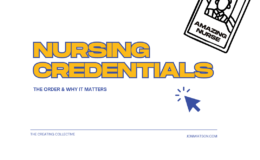Here it is – the first nursing journal article in response to Nursing Idea’s Research Challenge. I really enjoyed this one.
The Article: Lewis, P. S. and Malecha, A. (2011). The impact of workplace incivility on the work environment, manager skill, and productivity. Journal of Nursing Administration, 41(1): 41-47.
The Big Idea: This study researched the impact of workplace incivility, or WPI, on staff nurses as related to productivity. WPI is defined as “low-intensity deviant behavior with ambiguous intent to harm the target, in violation of workplace norms for mutual respect.” The study compared various hospital units in standard nursing environments to those in healthy work environments (which were defined as Magnet®, Pathway to Excellence, and/or Beacon Unit recognition), nurses’ perception of their managers’ skill handling WPI, and the cost of decreased productivity caused by WPI.
Survey Says!: Nurses working in healthy work environments reported lower workplace incivility than their counterparts in standard environments. The nurses with the lowest WPI scores perceived their managers as more skilled in handling WPI, and participants agreed managers who are aware of WPI and more cognizant of the workplace environment have greater abilities handling WPI. The OR staff had higher WPI scores than ICU, ED, and MedSurg. WPI in either healthy or standard nursing environments lead to a decrease in productivity at the same rate of financial expense.
Quotable: “A large majority of the nurses in the sample experienced WPI in the last year (84.8%, n=553). Interestingly, 36.7% (n=239) of the nurses in the sample indicated that they had instigated WPI to another person in the last year.”
“Lost productivity…computes to $11,581 per nurse pear year…as a result of WPI.”
“There was a negative relationship indicating that the higher the incivility, the lower the productivity.”
So What?: This study confirmed many of the findings in other workplace incivility studies, but it put a dollar amount on the lost productivity as a result of WPI for the very first time – $11,581 per nurse per year! Money talks, so this is yet another reason facilities create and maintain healthy work environments. Also, leaders who were clued into the environment were perceived as more skilled in handling WPI, which supports managers rounding on the units and actually talking to staff. (Novel idea, huh?) In addition, components of healthy work environments such as shared governance models and collaborative efforts prove powerful yet again. The authors show that nurse managers and the work environment make personal and financial impacts within an institution’s nursing workforce, serving as either assets or liabilities.
————–
Thank you to Rob Fraser, RN, of Nursing Ideas, for this great challenge. Big thanks to J Doe, of Those Emergency Blues, for the encouragement to take on this challenge.





